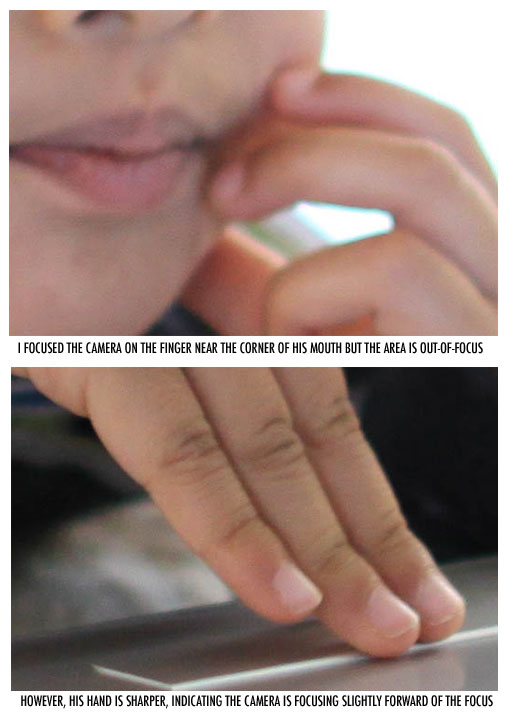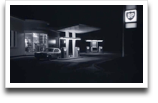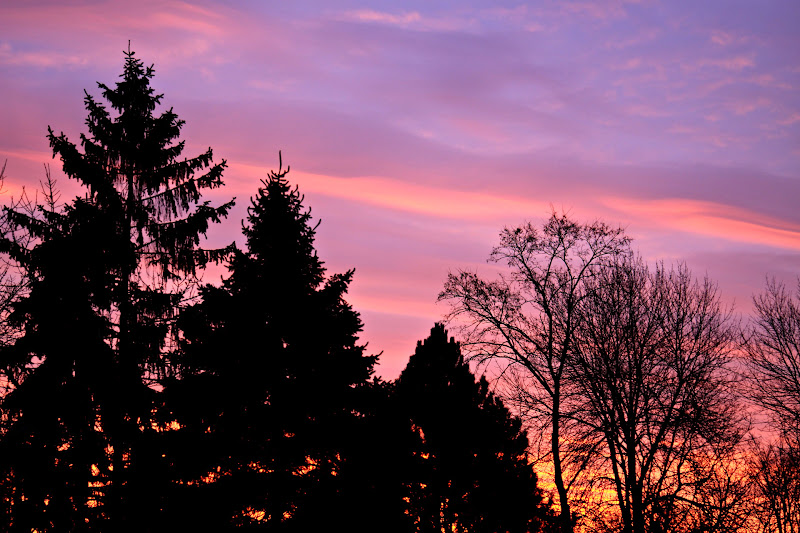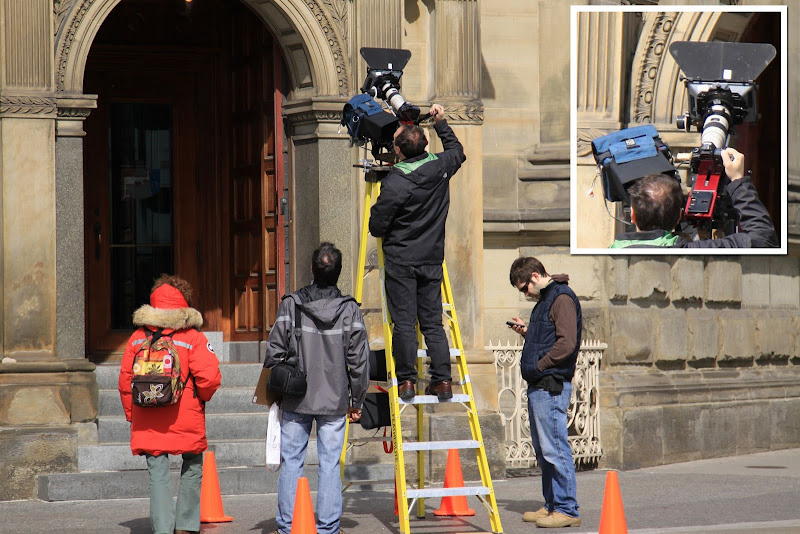This journal documents my experiences with a Canon 50D,
my first DSLR camera, purchased on Oct. 16, 2008. It is a showcase
for my photography, includes comments about the camera's usability,
with suggestions for improvement and discusses photography-related
topics. This month, I realized that my 50mm/1.4 needed an
adjustment to focus properly at wide apertures.
Open House 2010 Photos
photos
Fri Apr 30 18:37:33 2010
I shot the Open House photographs with the 24/1.4L II lens. Compare with last year's photos shot with the 24-105/4L.
I exposed most of the photos with Center Weighted Average metering. A few were shot at a very shallow focus and the subjects were standing at different depths which made the look blurry; I'm not used to shooting portraits, shooting buildings and streets is a lot easier.
There were a couple of badly exposed ones (which is regretful). It is very frustating to shoot this event because each group is in a different lighting condition and I have to adjust camera settings about every minute. Sometimes, I forget to adjust the settings and the photograph is exposed badly. It is also very tiring as I have to walk the length of a city block several times to photograph everyone.
From some early test, the lens definitely needs a focus micro-adjustment to shoot at f/1.4, but I decided to shoot it un-corrected to get a baseline to compare. A couple of the photographs were completely out of focus (despite the camera registering focus aquisition) so Canon's AF suckage strikes again.
In hindsight, I should have practiced shooting more with this lens before using it "for real".
Update Sat May 01 11:05:50 2010: One thing I did notice in a couple of the photos (refer to the pair of photos with the three students in the atrium, where one of the trio is wearing an electric blue shirt) I took at f/5.6 is that they are SHARP— for the first time ever, I couldn't imagine performing an unsharp mask pass on the final image.
Toronto Scenes: Waiting for Track Departure Information
photo
Sat May 01 12:09:54 2010
Photozone Review of the 24/1.4L II
Sat May 01 13:05:37 2010
I would have to agree with the Photozone review of the 24/1.4L II, "The Canon EF 24mm f/1.4 USM L II gave us some mixed feelings during the tests. If you use it at its sweet settings— that's between f/4 and f/8— the lens will be about as good as it gets for a lens in this class."
My lens philosopy on taking beautiful pictures, based on the belief that only the human eye is the perfect lens, is simple:
- Choose the lens with the focal length you want.
- Find the sweet spot of the chosen lens (the aperture at which it excels).
- Shoot away.
Illusory Superiority
philosophy
Sat May 01 14:37:09 2010
What is it about the human mind that makes people believe that something which is difficult to do, seem easy to do when an expert, with years of training, does it effortlessly? Let me give an example: I was watching "Funny Face" and half-way through the movie there is a (unexpected) dance sequence where Fred Astaire, playing Richard Avedon (who, I'm sure, was as good a dancer as Astaire was a photographer), makes it look so easy. But if you pay attention, you notice that the cuts are just before the difficult trick sequences, which, no doubt, took several takes, despite Astaire's skill.
When people see a photograph they like, they typically think to themselves, "that looks easy, I can do that" and attempting to replicate it with whatever tools they have at hand, which is usually a point and shoot camera. After furstration sets in, there may be a realization that there might just be something more to photography.
When I asked the opening question of this essay in the #emacs IRC channel, I learned that there is a clinical term for this phenomena, called illusory superiority.
One of the main effects of illusory superiority in intelligence is the Downing effect. This describes the tendency of people with a below average intelligence quotient (IQ) to overestimate their intelligence, and of people with an above average IQ to underestimate their intelligence.
However, based on the the Dunning-Kruger study, there is hope.
Individuals who were worst at performing the tasks were also worst at recognising skill in those tasks.
- Incompetent individuals tend to overestimate their own level of skill.
- Incompetent individuals fail to recognize genuine skill in others.
- Incompetent individuals fail to recognize the extremity of their inadequacy.
- If they can be trained to substantially improve their own skill level, these individuals can recognize and acknowledge their own previous lack of skill.
The dancer Martha Graham noted that, "Nobody cares if you can't dance well. Just get up and dance. Great dancers are not great because of their technique; great dancers are great because of their passion." This is very true and applies to any art; where "passion" is a synonym for "practice". Through constant practice, ones technique and thus skill is improved and developed into an art.
I am currently reading Julia Child's autobiography, "My Life in France", which describes what started as a love affair with eating French food and transformaing into a passion for cooking it. The Cordon Bleu culinary school where she studied, taught the theme and variations technique of cooking a particular dish and her passion for cooking was such that she spent hours trying different proportions of ingredients to cook a dish to perfection when writing her first cookbook.
I am under no illusions about my photography skills. In my small circle of coleagues at work, I am the best photographer only because I have taken more photographs than they have. As soon as I step out of that circle, even at the university level, my photography would be best described as mediocre.
I did give myself ten years to learn photography, so I'm in no rush. It's possible I might even get bored with it before then.
Toronto Scenes: Waiting for the Doors on Track 5
photo
Sun May 02 17:24:47 2010
I converted this photograph to black and white because of the sickly orange hue from the sodium lamps. A great example of how narrow the platforms really are, compared to European stations.
The Storytelling Power of Photography
photographer
Tue May 04 14:23:41 2010
A post about a TEDx conference presentation by Renée Byer, Pulitzer-prize winning photojournalist, on the power of photography (as opposed to video).
Richard Kern Exhibition (Warning: Nudity)
photographer photos
Tue May 04 21:29:00 2010
There is a Richard Kern exhibition at The Studio Gallery in Toronto.
I am envious of not only his portrait photography but also his rapport with his models (the lack of which, is the main reason why I shoot urban landscapes). The VBS.tv video series, "Shot by Kern", is very entertaining; stick to the 4-star videos for the most interesting personalities (and prettiest subjects).
Friday Foto: Late Night Fill-up
photo
Thu May 06 22:55:51 2010
This photograph is from my "Late night..." series which explores people doing things at night. I began the series by photographing restaurants and cafés from across the street and gradually expanded the concept from there.
This photo of a Petro Canada gas station is one of my favourite photographs, in terms of composition, exposure and mood. It's slightly out of focus because Canon AF in low-light (actually, in general) is pretty craptacular. The only regrets I have are taking only one photograph (it was cold) and not manually focusing the camera.
Av, f/2.2, ISO1600, (I forget the WB setting), Centre-Weighted Average metering, I metered on the sign on the right-hand-side (so I wouldn't blow the highlights), locked the exposure, re-composed and took the photo. No post-processing at all.
Some thoughts: How many people are there in the photograph? Why is
the middle light, on the side of the building, pointing upwards?
Update Fri May 07 14:04:29 2010: This is one of those coincidences that worry me— last night, I was watching, Un homme et une femme, (which has superb cinematography) and I was shocked to see a night-time scene of a BP gas-station somewhat similar to my Friday Foto (also oddly, BP is in the news due to the oil-rig fire and catastrophe in the Gulf).
Focus Micro-Adjustment on the 24/1.4L II
gear
Mon May 10 16:32:56 2010

After photographing Department Open House with the uncorrected 24/1.4L II, it was evident the lens was back-focusing. I got an opportunity to photograph with the focus-corrected (-8 Forward, eye-balled after pixel-peeping) on Saturday. I found that the lens still needed a minor additional correction (to -6). This new correction, however, is untested.

What Makes a Great Portrait?
essay photos
Wed May 12 09:01:11 2010
An essay by Joerg Colberg that asks several photographers to answer, "What makes a great portrait?"
Friday Foto: Lone Bird Observing Sunset
photo
Thu May 13 23:12:53 2010
A very simple sunset which typically involves showing up with a camera (in this case my first point-and-shoot, the 3.2MP Canon S30) and taking the picture.
Except for the single bird, which was complete luck. But it makes all
the difference.
Note: noise reduction was performed on this photo using Photoshop Elements; the upper part of the sky was a bit noisy. I also cloned out a lens flare.
Best EOS Lenses
gear
Sun May 16 20:18:37 2010
A list of lenses compiled by Bob Atkins, which were voted the best that Canon has to offer, by photographers.
I will consider getting one of the 85mm lenses (even the non-L 85/1.8 is excellent) to photograph insects, nature, etc. up close.
1 video is worth 20,000 photographs
video
Tue May 18 17:33:27 2010
Some really nice time-lapse videos by Sean Stiegemeier photographed with a Canon 5D2. Each frame of this travel videois composed of 3 HDR photographs; the video has approximately 20,000 photographs. I particularily like the starfield sequences.
The same photographer also recently photographed the icelandic volcano and made another timelapse video; the pans were made using a MILapse dolly.
"War Photographer"
documentary photographer
Wed May 19 21:54:05 2010
"War Photographer" is a documentary about James Nachtwey. It has the traditional interviews with members of the press and photo editors, and a documentary video team following him as he photographs in Kosovo, the West Bank, Indonesia, etc.. It also has an unique angle from a micro video-camera mounted on the right-hand-side of Nachtwey's Canon camera— in the bottom part of the frame, the viewer sees the camera's top-side LCD (the shutter speed and aperture are visible) and the lens, while the top part of the frame shows the scene he's shooting.
He shoots film (black and white for the most part) and uses prime L lenses; running forward and backwards to re-compose his shots.
There are a couple of memorable scenes: one is a pre-Photoshop dodge-and-burn session in the darkroom, prior to an exhibition; the second is a scene at a mass grave in Kosovo where Christiane Amanpour of CNN bravely refuses a face-mask (twice) before entering the area where the bodies are being exhumed and then moments later, overcome by the stench, is obliged to wear one like everyone else on the scene. Soon after, two children appear, oblivious to the smell, carrying bunches of wild flowers and to the amazement of everyone present, begin sprinkling the flowers amongst the bodies.
Friday Foto: Pink Sunrise
photo
Fri May 21 00:30:13 2010
I happened to wake-up early one morning and when I glanced outside, I
knew I had to photograph the sunrise.
It took a couple of minutes to unpack the camera, which luckily had
the 24-105/4L mounted, and put on my pants, my parka, my scarf, boots
and gloves and step outside into the cold February morning.
I took about 10 photographs. Even though I was rushing, I remembered
to check my camera settings-- what usually ends up happening is that
the first few photos have the previous night's exposure settings.
But because there was very little light, I shot at f/4 (55mm at 1/30s); to
compensate for a smaller aperture, would mean a higher ISO, which
meant more noise. It would have taken too long to setup the tripod
which I would have needed to shoot at f/8.
Within a few minutes, the sun had come up and the magic sky was gone and I went back to bed.
Toronto Street Scene: Video Shoot
photo
Wed May 26 14:11:21 2010
DSLR video shoot at the Hockey Hall of Fame entrance, photographed from across the street. The camera is either a 7D or a 5D2 with a 70-200 f/2.8L lens and external video monitor connected via HDMI (see inset). The rig has a focus follow knob at the left-front of the lens. I don't know what the red box behind the camera is for or the purpose of the handle he's holding.
Friday Foto: Sparrow on a Tree Branch
photo
Fri May 28 12:10:28 2010
A pair of sparrows flew into a tree and I managed only two photos before they flew away; I can't decide which of the two pictures I like best (the one above, of the female, wins only because it's sharper).






